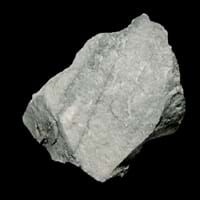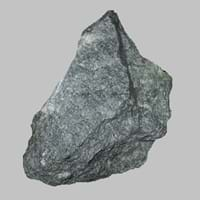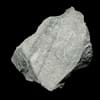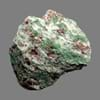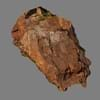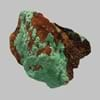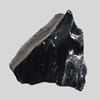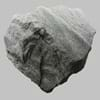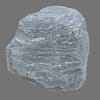Definition
Quartzite is a non-foliated metamorphic rock that forms by the metamorphism of pure quartz Sandstone
It is a metamorphic magnesium rich rock because it is composed of the mineral talc
Discoverer
Unknown
Unknown
Etymology
From quartz + -ite
From 17th century, because of its greasy feel and use like a soap
Class
Metamorphic Rocks
Metamorphic Rocks
Sub-Class
Durable Rock, Hard Rock
Durable Rock, Soft Rock
Group
Not Applicable
Not Applicable
Other Categories
Medium Grained Rock, Opaque Rock
Fine Grained Rock, Opaque Rock
Texture
Foliated, Granular
Polished
Color
Black, Blue, Brown, Green, Light Grey, Purple, White, Yellow
Black, Black to Grey, Green, Grey
Durability
Durable
Durable
Appearance
Lustrous
Dull, Banded and Foilated
Interior Uses
Countertops, Decorative Aggregates, Flooring, Homes
Bathrooms, Decorative Aggregates, Homes, Interior Decoration
Exterior Uses
As Building Stone, As Facing Stone, Garden Decoration, Paving Stone
As Facing Stone, Garden Decoration
Other Architectural Uses
Curbing
Curbing
Construction Industry
Arrowheads, As Dimension Stone, Cement Manufacture, Construction Aggregate, Cutting Tool, for Road Aggregate, Making natural cement, Production of Glass and Ceramics, Rail Track Ballast, Roadstone
Manufacture of Magnesium and Dolomite Refractories
Medical Industry
Not Yet Used
Taken as a Supplement for Calcium or Magnesium
Antiquity Uses
Artifacts, Jewellery, Monuments, Sculpture
Artifacts, Jewellery, Monuments, Sculpture
Commercial Uses
An Oil and Gas Reservoir, As armour rock for sea walls, Cemetery Markers, Commemorative Tablets, In aquifers, Laboratory bench tops, Petroleum reservoirs, Soil Conditioner, Source of Magnesia (MgO), Tombstones, Used in aquariums
Cemetery Markers, Creating Artwork, Gemstone, Jewelry, Manufacture of Soap, Solvents, Dyes, Plastics and Fibres, Production of Lime, Source of Magnesia (MgO)
Types
Not Available
Not Available
Features
Generally rough to touch, Is one of the oldest rock
Host Rock for Lead
Archaeological Significance
Famous Monuments
Data Not Available
Christ the Redeemer in Rio de Janeiro, Stonehenge in English county of Wiltshire
Famous Sculptures
Data Not Available
Data Not Available
Pictographs
Not Used
Used
Petroglyphs
Not Used
Used
Formation
Quartzite forms from sandstone and the mineral quartz being put under extreme heat and pressure.
Soapstone is a talc-schist, which is a type of metamorphic rock and it is largely composed of the mineral talc and is thus rich inmagnesium.
Mineral Content
Chlorite, Epidote, Hematite, Kyanite, Magnetite, Muscovite or Illite, Quartz
Albite, Apatite, Biotite, Calcite, Carbonate, Clay Minerals, Hornblende, Ilmenite, Micas, Plagioclase, Pyroxene, Quartz
Compound Content
Aluminium Oxide, CaO, Iron(III) Oxide, MgO, Sodium Oxide, Silicon Dioxide
CaO, Mg, MgO
Types of Metamorphism
Burial Metamorphism, Cataclastic Metamorphism, Hydrothermal Metamorphism, Regional Metamorphism
Burial Metamorphism, Cataclastic Metamorphism, Contact Metamorphism, Hydrothermal Metamorphism, Impact Metamorphism, Regional Metamorphism
Types of Weathering
Biological Weathering, Chemical Weathering, Mechanical Weathering
Not Applicable
Types of Erosion
Chemical Erosion, Coastal Erosion, Water Erosion, Wind Erosion
Not Applicable
Grain Size
Medium Grained
Fine Grained
Fracture
Uneven, Splintery or Conchoidal
Conchoidal
Porosity
Less Porous
Less Porous
Cleavage
Indiscernible
Perfect
Specific Gravity
2.6-2.8
2.86
Transparency
Transparent to Translucent
Opaque
Density
2.32-2.42 g/cm3
2.8-2.9 g/cm3
Resistance
Heat Resistant, Impact Resistant, Pressure Resistant, Wear Resistant
Heat Resistant, Pressure Resistant
Deposits in Eastern Continents
Asia
China, India, Israel, Russia, South Korea, Thailand, Turkey
China, India, Indonesia, Japan, North Korea, Russia, Saudi Arabia, Singapore, South Korea, Sri Lanka, Tajikistan, Thailand
Africa
Ethiopia, Morocco, South Africa, Zimbabwe
Egypt, Ethiopia, Ghana, South Africa, Western Africa
Europe
England, Italy, Norway, Scotland, Sweden, United Kingdom
Austria, England, Finland, France, Germany, Greece, Spain, Sweden, Switzerland, United Kingdom
Others
Greenland
Not Yet Found
Deposits in Western Continents
North America
Bahamas, Canada, USA
Canada, USA
South America
Brazil, Colombia, Venezuela
Colombia
Deposits in Oceania Continent
Australia
New Zealand, Queensland, Western Australia
Central Australia, New Zealand, Queensland
All about Quartzite and Soapstone Properties
Know all about Quartzite and Soapstone properties here. All properties of rocks are important as they define the type of rock and its application. Quartzite and Soapstone belong to Metamorphic Rocks.Texture of Quartzite is Foliated, Granular whereas that of Soapstone is Polished. Quartzite appears Lustrous and Soapstone appears Dull, Banded and Foilated. The luster of Quartzite is vitreous while that of Soapstone is greasy. Quartzite is available in black, blue, brown, green, light grey, purple, white, yellow colors whereas Soapstone is available in black, black to grey, green, grey colors. The commercial uses of Quartzite are an oil and gas reservoir, as armour rock for sea walls, cemetery markers, commemorative tablets, in aquifers, laboratory bench tops, petroleum reservoirs, soil conditioner, source of magnesia (mgo), tombstones, used in aquariums and that of Soapstone are cemetery markers, creating artwork, gemstone, jewelry, manufacture of soap, solvents, dyes, plastics and fibres, production of lime, source of magnesia (mgo).
